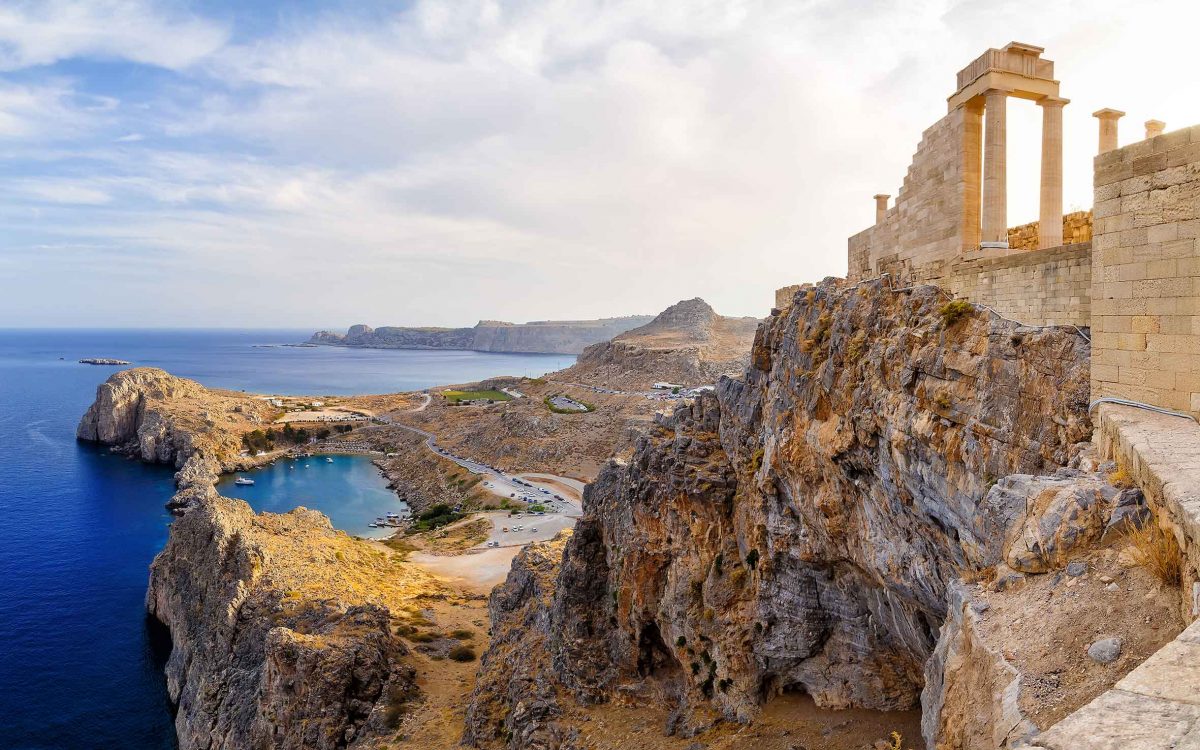The acropolis of Lindos, rising 116 meters above the eastern Aegean, is crowned by a spectacular assortment of ancient and medieval monuments. With panoramic views of the surrounding sea, the monumental citadel on the east coast of Rhodes was home to a Panhellenic sanctuary dedicated to the cult worship of the goddess Athena.
The ancient city of Lindos was founded by the Dorians in the 10th century BC, and, along with Ialysos and Kamiros, became one of the preeminent city-states on Rhodes. Its eastern location made it a maritime gateway to the Aegean from Cyprus and the Levant, a natural meeting point for Greek and Phoenician seafarers criss-crossing the eastern Mediterranean. By the 8th century BC, Lindos prospered as a major trading center.
In the late 6th century BC, the city was ruled by the tyrant-philosopher Cleobulus. He revived the earlier cult worship of Athena Lindia, and oversaw the construction of a massive Doric temple on the summit of the acropolis, which attained its final form at the end of the 4th century BC. A large cult statue of the goddess, carrying a shield and wearing a polos (high cylindrical crown), was fastened to the wall of the cella, the inner sanctum of the temple.
Further buildings were added in the Hellenistic period, including a propylaea, staircase, and an elegant stoa (arcade).












